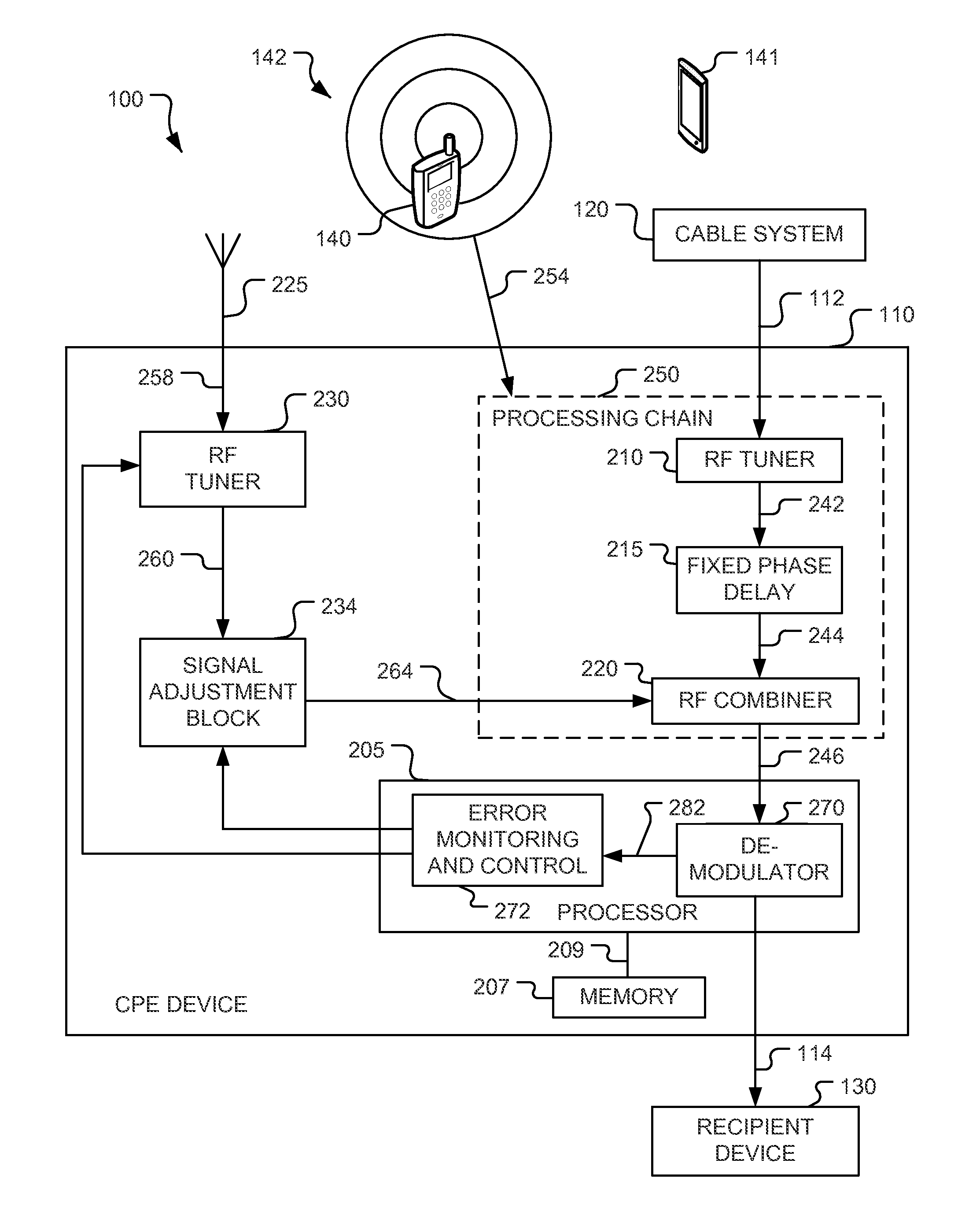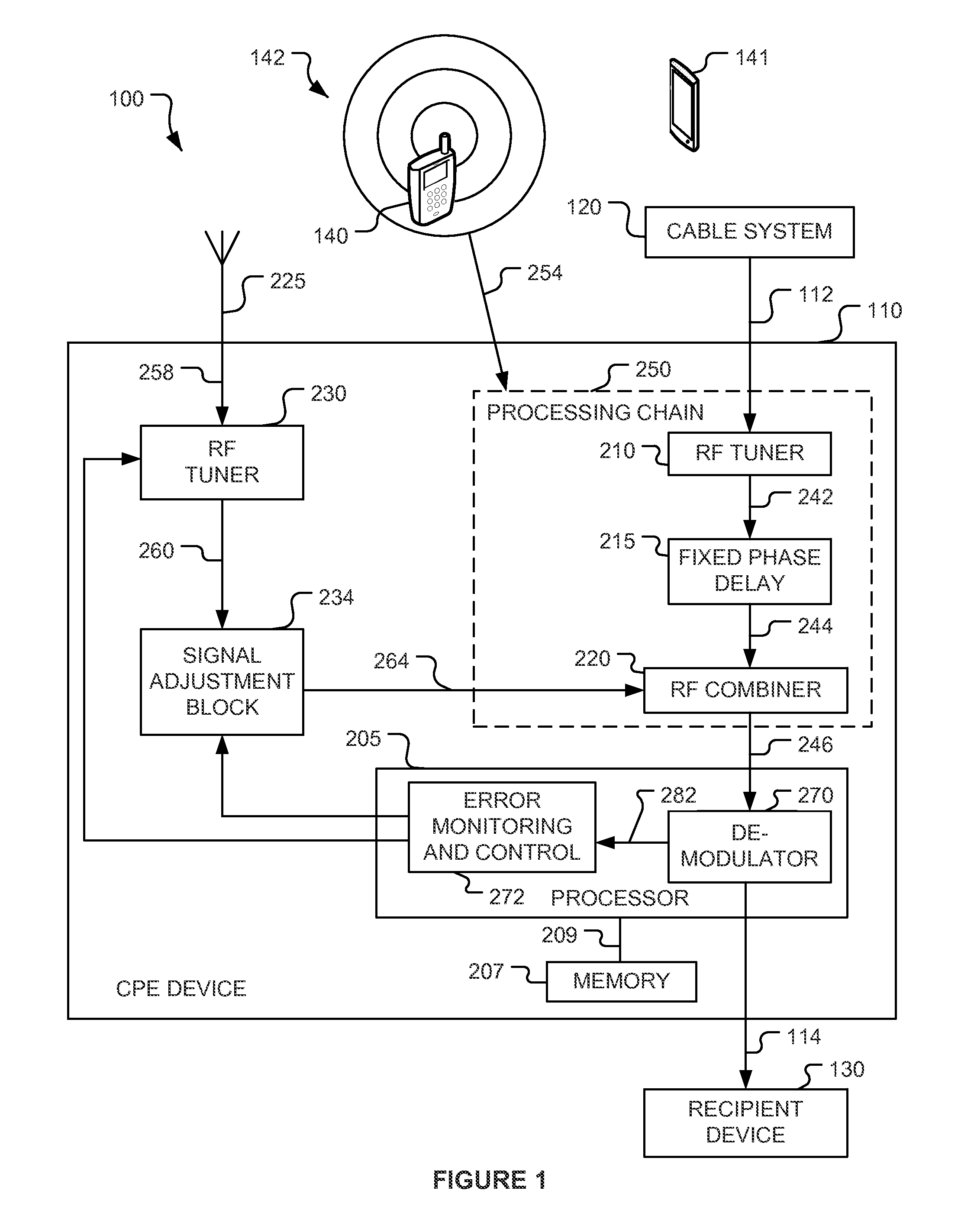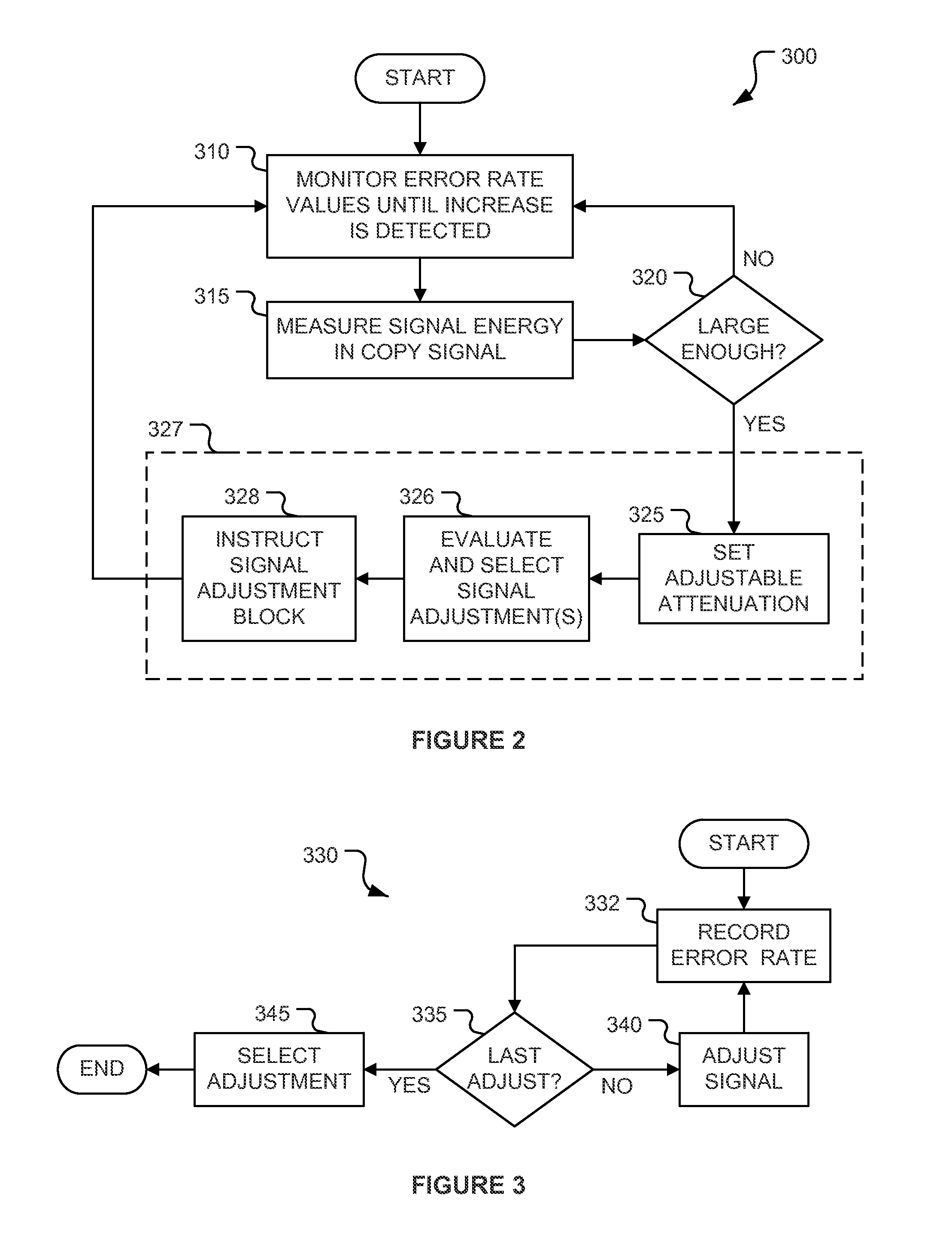Methods for canceling interfering wireless signals in cable customer premises equipment devices and outside plant
a technology for customer premises equipment and wireless signals, which is applied in the direction of transmission monitoring, line-faults/interference reduction, baseband system details, etc., can solve the problems of signal-processing problems in the cpe device, the device is not working properly, and the cable customer premises equipment is experiencing problems
- Summary
- Abstract
- Description
- Claims
- Application Information
AI Technical Summary
Benefits of technology
Problems solved by technology
Method used
Image
Examples
Embodiment Construction
[0016]FIG. 1 is a block diagram of a system 100 including an exemplary customer premises equipment (“CPE”) device 110 connected to an exemplary cable system 120. While FIG. 1 illustrates the single CPE device 110, those of ordinary skill in the art appreciate that a plurality of CPE devices like the CPE device 110 may be connected to the cable system 120. The cable system 120 may include any conventional cable system configured to transmit a cable signal (illustrated by the arrow 112) to the CPE device 110. The CPE device 110 may include or be connected to a recipient device 130. The CPE device 110 receives the cable signal (illustrated as arrow 112) from the cable system 120, processes the cable signal to produce a processed signal (illustrated as arrow 114), and provides the processed signal to the recipient device 130. The recipient device 130 may be a display device configured to generate a display viewable by a user (not shown) based at least in part on the processed signal (il...
PUM
 Login to View More
Login to View More Abstract
Description
Claims
Application Information
 Login to View More
Login to View More - R&D
- Intellectual Property
- Life Sciences
- Materials
- Tech Scout
- Unparalleled Data Quality
- Higher Quality Content
- 60% Fewer Hallucinations
Browse by: Latest US Patents, China's latest patents, Technical Efficacy Thesaurus, Application Domain, Technology Topic, Popular Technical Reports.
© 2025 PatSnap. All rights reserved.Legal|Privacy policy|Modern Slavery Act Transparency Statement|Sitemap|About US| Contact US: help@patsnap.com



